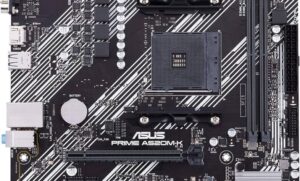SQL Server Integration Services (SSIS) stands out as one of the most powerful tools for data integration and transformation. Specifically, the SSIS 950 version introduces a range of features and enhancements that make it indispensable for data professionals. This comprehensive guide delves deep into SSIS 950, exploring its capabilities, benefits, and best practices for maximizing its potential.
What is SSIS 950?
SQL Server Integration Services (SSIS) is a component of the Microsoft SQL Server database software that can be used to perform a broad range of data migration and transformation tasks. SSIS 950 represents a significant milestone in the evolution of SSIS, offering enhanced functionality, improved performance, and greater flexibility. With SSIS 950, businesses can seamlessly integrate diverse data sources, automate workflows, and manage data more effectively.
Key Features of SSIS 950
1. Enhanced Performance and Scalability
One of the standout features of SSIS 950 is its enhanced performance and scalability. The engine has been optimized to handle larger data volumes with improved processing speed. This ensures that even as your data grows, SSIS 950 can scale to meet your needs without compromising performance.
2. Improved Data Integration Capabilities
SSIS 950 introduces new connectors and adapters that allow for more efficient data integration. Whether you are pulling data from cloud services, databases, or flat files, SSIS 950 provides robust tools to ensure seamless data integration. The introduction of native connectors for popular cloud platforms like Azure and AWS further enhances its utility in modern data environments.
3. Advanced Data Transformation Tools
Data transformation is at the heart of SSIS, and the 950 version brings more advanced transformation capabilities. With new transformation tasks and components, data professionals can perform complex transformations with greater ease. Whether you need to clean data, aggregate values, or perform calculations, SSIS 950 offers a comprehensive set of tools to meet your requirements.
4. Improved Debugging and Error Handling
Debugging and error handling are critical aspects of any data integration process. SSIS 950 introduces enhanced debugging tools that make it easier to identify and resolve issues. With more detailed error messages and improved logging capabilities, data professionals can quickly pinpoint the root cause of errors and take corrective action.
5. Better Support for Data Warehousing
Data warehousing is a key application for SSIS, and the 950 version offers improved support for data warehousing projects. With enhanced ETL (Extract, Transform, Load) capabilities, SSIS 950 makes it easier to load large datasets into data warehouses. The improved performance ensures that data loads are faster and more efficient, reducing the time required to refresh data in your warehouse.
Best Practices for Using SSIS 950
1. Optimize Data Flow
To get the most out of SSIS 950, it is essential to optimize your data flow. This involves minimizing data movement and reducing the number of transformations in the data flow. By optimizing your data flow, you can significantly improve the performance of your SSIS packages.
2. Leverage Parallel Processing
SSIS 950 supports parallel processing, which allows you to run multiple tasks simultaneously. By designing your SSIS packages to take advantage of parallel processing, you can reduce the overall execution time and improve efficiency.
3. Use Incremental Loads
When dealing with large datasets, it is often more efficient to use incremental loads rather than full loads. Incremental loading involves only loading the data that has changed since the last load, which can significantly reduce the amount of data processed and improve performance.
4. Implement Robust Error Handling
Effective error handling is crucial for ensuring the reliability of your SSIS packages. SSIS 950 provides enhanced error handling capabilities, allowing you to implement custom error-handling strategies that are tailored to your specific needs. This can include setting up retries, logging errors for further analysis, and implementing conditional logic to handle different types of errors.
5. Monitor and Tune Performance
Regular monitoring and performance tuning are essential for maintaining the efficiency of your SSIS packages. SSIS 950 includes advanced monitoring tools that allow you to track the performance of your packages and identify bottlenecks. By regularly tuning your packages, you can ensure they continue to perform optimally as your data and workloads evolve.
Advanced Features of SSIS 950
1. Integration with Azure Data Factory
SSIS 950 offers seamless integration with Azure Data Factory (ADF), Microsoft’s cloud-based data integration service. This integration allows you to extend your on-premises SSIS packages to the cloud, leveraging the scalability and flexibility of Azure. With SSIS 950, you can easily lift and shift your existing SSIS packages to Azure, enabling a hybrid data integration strategy.
2. Enhanced Support for Big Data
Big data is becoming increasingly important for businesses, and SSIS 950 provides enhanced support for big data platforms. With native connectors for Hadoop, Spark, and other big data technologies, SSIS 950 allows you to integrate and process big data alongside traditional structured data. This makes it easier to build comprehensive data pipelines that span multiple data environments.
3. Advanced Security Features
Security is a top priority for any data integration solution, and SSIS 950 includes advanced security features to protect your data. This includes support for encryption, secure credential management, and detailed auditing capabilities. With SSIS 950, you can ensure that your data is protected at every stage of the integration process.
4. Integration with Machine Learning Models
SSIS 950 enables the integration of machine learning models into your data integration workflows. By incorporating machine learning models into your SSIS packages, you can automate predictive analytics and decision-making processes. This allows you to build more intelligent data pipelines that can adapt to changing business needs.
Conclusion
SQL Server Integration Services 950 is a powerful tool for data integration, offering a range of features and enhancements that make it a valuable asset for any organization. From improved performance and scalability to advanced data transformation and error handling, SSIS 950 provides everything you need to build efficient and reliable data integration solutions. By following best practices and leveraging the advanced features of SSIS 950, you can ensure that your data integration projects are successful and deliver maximum value to your organization.







Be First to Comment